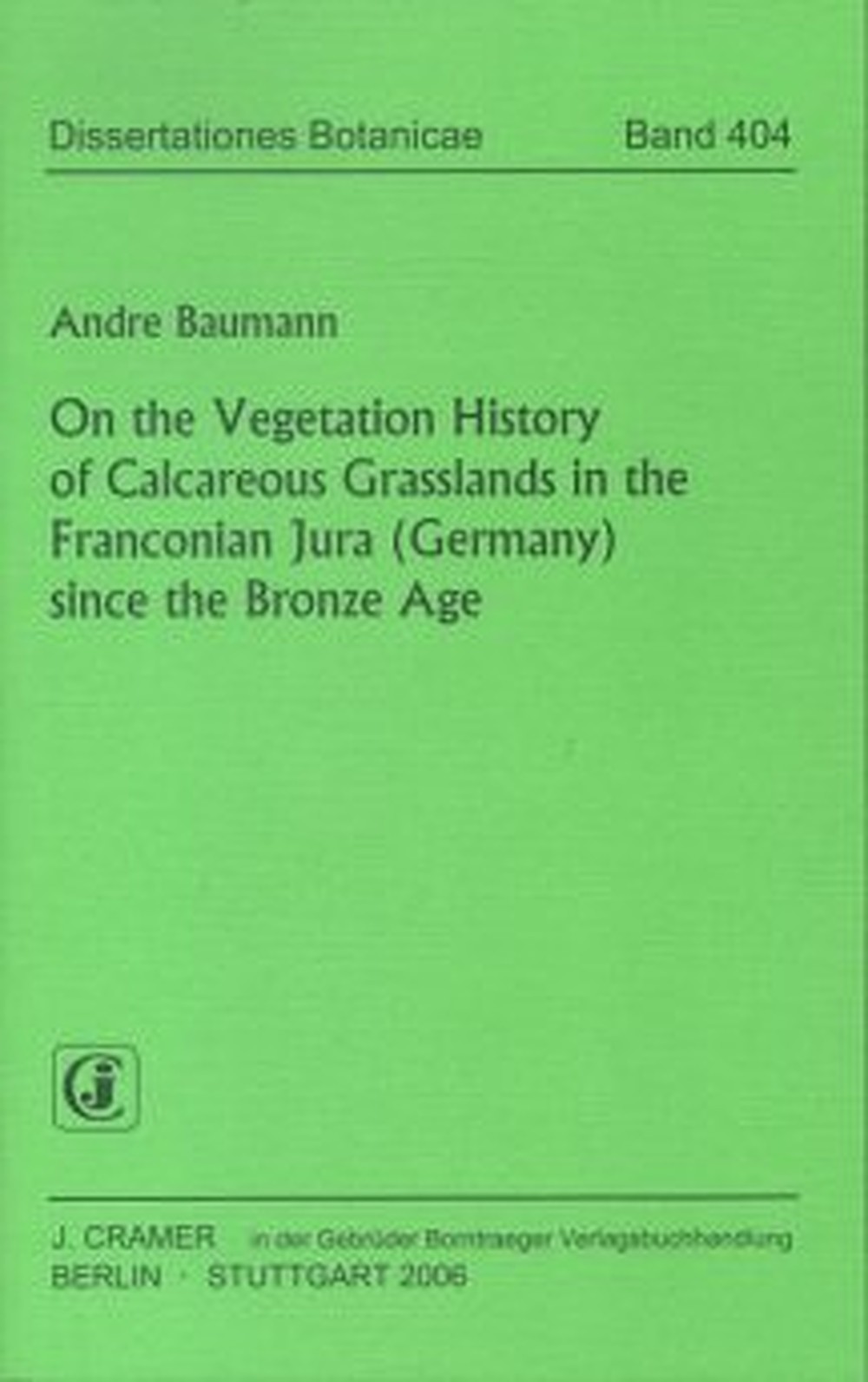The main goal of the study was to reconstruct the development of
calcareous grasslands since the Bronze Age in the Franconian
Jura. Several issues were addressed in the research: the appropriate
archaeobotanical indicators for calcareous grasslands; the dynamics of
calcareous grassland area in the research area; have indicators for
dry grasslands been present continuously after appearance; are there
correlations between the vegetation history and socioeconomic
developments; are there similarities between the regional history of
calcareous grasslands and other regions of Europe.
The book is divided into nine chapters. The first chapter is a
summary; the second chapter states the aim and tasks of the research
and introduces the reader with the survey area which is located in the
region of the Central and Southern Franconian Alb, Bavaria, Germany.
The third chapter is devoted to Central European calcareous grassland
history. It is an excellent overview of the state of art in research
of calcareous grassland history in Europe and discusses pros and cons
of methods used for this purpose. It gives a detailed insight into
development of calcareous grasslands since the Last Glacial. The main
conclusion is that calcareous grasslands existed in Central Europe as
smallscale habitats before the Neolithic times, and started to
increase with introduction of herding by humans, but reached their
maximum area in the Middle Ages.
The fourth chapter deals with anthracological analysis of prehistoric
settlements in the surroundings of Kallmünz in one of the greatest
prehistoric settlements in southern Germany. The main conclusion was
that the anthracological analysis confirmed a hypothesis that dry
calcareous grasslands were present in Kallmünz during the Bronze
Age. The local study was further expanded by pollen record of an
alluvial sediment core of the River Naab (including the radiocarbon
dating) (Chapter 5); and pedoanthracological study (Chapter 6).
The last chapter discusses the history of Franconian Alb calcareous
grasslands in modern times. The author concludes that the losses of
calcareous grasslands have been less dramatic than in the other parts
of Germany. Impressive maps, archive photos and diagrams illustrate
these findings.
In conclusion, I highly recommend this book to every person interested
in vegetation history (and not only grasslands!) of Europe. You will
get a valuable information both on methodological issues and
vegetation and landscape history in Central Europe over centuries.
Solvita Rūsiņa, Riga, Latvia
Bulletin 3 (June 2009) of the European Dry Grassland Group, p. 26
